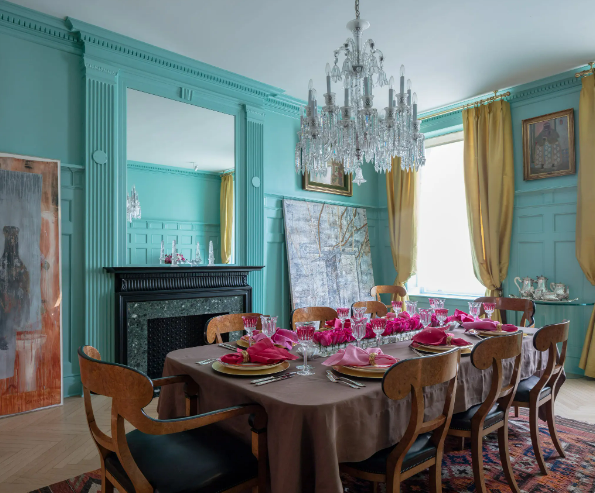我们通过发表论文来表彰学生 STEM 写作比赛的前八名获奖者。这是海伦·罗奇(Helen Roche)的作品。

信用。。。布拉德·迪克森为《纽约时报》撰稿
这篇文章由来自俄亥俄州莱克伍德莱克伍德高中的 17 岁的海伦·罗奇撰写,是学习网络第三届年度 STEM 写作比赛的前八名获奖者之一,我们收到了 3,564 份参赛作品。
Just as we consume food, we consume color at an even greater rate, constantly digesting the different tonalities that paint our world. But little do we know that the beige of the library walls we study in, the red of busy hallways and restaurants, and the blue of your own bedroom have been strategically chosen from millions of different swatches and tones and shades to control our bodily functions and alter our emotional behavior.
From the moment you entered the world, you were swaddled in a baby pink blanket. The same pink of the padded walls that consoled a kicking and screaming child detained at the San Bernardino County Probation Department in California to sleep within 10 minutes. The same pink that covers the buildings of urban cities to prevent vandalism. And the same pink on the walls of visiting football teams’ locker rooms to calm grown men into submission and defeat. This shade of “Baker-Miller” pink finds itself recurring in our lives, all resulting in the same effect — comfort.
It’s known that color sets a mood: red feels energetic; orange and yellow are lively and a bit overwhelming; green and blue bring calmness; violet feels creative; pink is comforting; and neutrals feel … neutral. But it’s not so known how and why. Stephen Westland, a professor and the chair of color science and technology at the University of Leeds, explains that these effects are based on “light but not vision.” When exposed to color, the retinal cells of the eye don’t just send signals to the visual cortex to recognize such color, but also to the hypothalamus, the part of the brain in charge of the body’s self-regulation — the part of the brain unable to recognize visual images at all. Simply seeing a color, or, more particularly, the light the color gives off, can affect a person’s mood, temperature, sleep, heart rate, ability to eat and breathing patterns.
This stands true in an experiment conducted by Harold Wohlfarth, published in a 1982 issue of the International Journal of Biosocial Research, in which he repainted an orange and white classroom in shades of blue and installed gray carpeting in place of the previous orange rug; all of the students’ blood pressure, respiration rates and pulses dropped, and they all became calmer, after the room makeover. That included two blind students: Although their eyes were unable to see the physical changes, their hypothalami picked up the changes in wavelengths, so they were ultimately able to reap the same benefits of those with sight.
It might seem silly, but simple changes in colors can save lives. All around the world, each day, the color blue saves lives, whether by bathing a premature baby in blue light to replace blood transfusions or by shining blue light on the platforms of Tokyo’s Yamanote rail lines to keep a survivor of depression here to live another day. Blue is just one color, so imagine what the whole rainbow could do with a little research.
Maybe now you’ll think a little harder about that shirt you wear tomorrow — not only what it will say about you, but what it will do to you.
Works Cited
Gruson, Lindsey. “Color Has a Powerful Effect on Behavior, Researchers Assert.” The New York Times, 19 Oct. 1982.
“The Psychology of Color.” The New York Times, 8 Jan. 2006.
“The Psychology of Colors and Their Meanings.” Color Psychology, 2021.
Westland, Stephen. “Does Color Really Affect Our Mind and Body? A Professor of Color Science Explains.” The Conversation, 25 Sept. 2017.